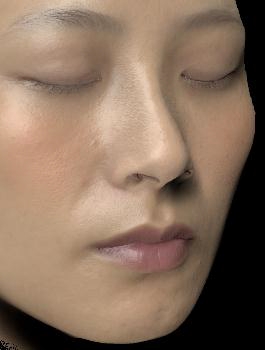Physically-based
Cosmetic Rendering
|
Our result |
Photo of real makeup |
Overview
Simulating realistic makeup effects is one of the important research issues
in the 3D facial animation and cosmetic industry. Existing approaches based on
image processing techniques, such as warping and blending, have been mostly
applied to transfer oneˇ¦s makeup to anotherˇ¦s. Although these approaches are
intuitive and need only makeup images, they have some drawbacks, e.g.,
distorted shapes and fixed viewing and lighting conditions. In this paper, we
propose an integrated approach, which combines the Kubelka-Munk model and a
screen-space skin rendering approach, to simulate 3D makeup effects. The
Kubelka-Munk model is used to compute total transmittance when light passes
through cosmetic layers, while the screen-space translucent rendering approach
simulates the subsurface scattering effects inside human skin. The parameters
of Kubelka-Munk model are obtained by measuring the optical properties of
different cosmetic materials, such as foundations, blushes and lipsticks. Our
results demonstrate that the proposed approach is able to render realistic
cosmetic effects on human facial models and different cosmetic materials and
styles can be flexibly applied and simulated in real time.
Publications
ˇP
Cheng-Guo Huang, Tsung-Shian Huang, Wen-Chieh Lin,
and Jung-Hong Chuang, ˇ§Physically-based
Cosmetic Rendering,ˇ¨ International Conference on Computer Animation and
Social Agents 2013 (Computer Animation and Virtual Worlds). [ppt slides]
Real-time rendering esults

